
In Japan, an island nation surrounded by the sea on all sides, you can enjoy fresh seafood all year round. What is the most iconic dishes made from these ingredients? Yes, it's sushi. Sushi combines vinegared rice with fresh toppings, forming a perfect harmony that is often considered a work of art. You might think it has a simple taste, but once you take a bite, a complex umami flavor spreads throughout your mouth, and many people become addicted to it.
Some people might think, "I want to try making sushi myself" or "I’d love to recreate it at home." However, mastering sushi-making requires significant skill, and merely imitating the process isn’t usually enough.
But now, "Sushi-Making Tours" for tourists visiting Japan are gaining popularity. These tours provide direct instruction from English-speaking instructors, making it accessible for anyone to learn the art of sushi-making. Today, we are joining one such recommended tour, the "Tsukiji Outer Market and Sushi Making Tour" recommended by JAPAN FOOD GUIDE along with a Taiwanese Instagram influencer 77.food, who loves Japanese gourmet food!
👉 View the tour course and details (Japan Food Guide)
Explore 'Tsukiji Outer Market' from the front of Tsukiji Honganji
The meeting point for the tour is in front of the main gate of Tsukiji Honganji. After joining up with our Japanese guide and other participants, we head towards the Tsukiji Market for our exploration.

The Tsukiji Outer Market is one of Tokyo’s major tourist attractions. Not only seafood, but also a variety of stores selling fresh produce, dried goods, pickles, processed foods, and traditional cooking tools like Japanese knives. The market bustles with activity from early in the morning, attracting a large crowd. In recent years, it has become especially popular with foreign tourists, who seek to experience Japan's rich food culture firsthand.
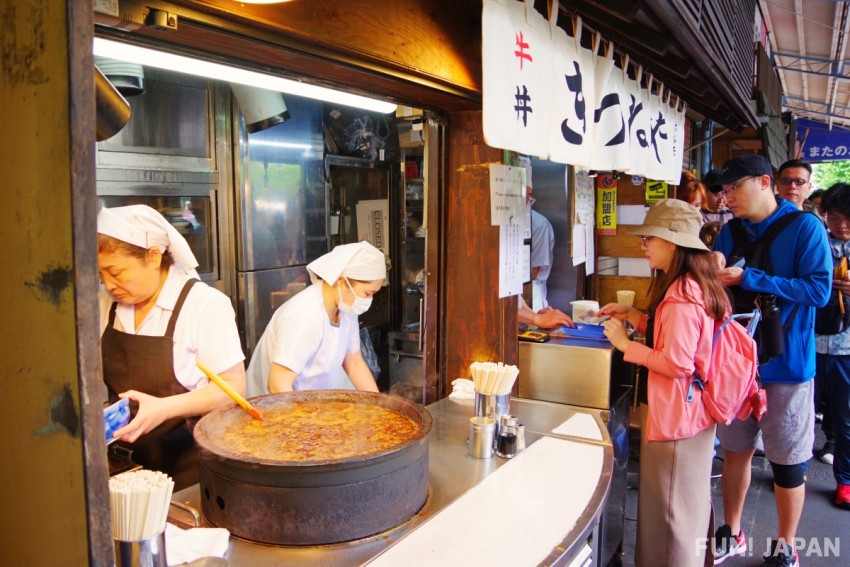
As we stroll through the market streets, the delicious smell of stew wafts through the air. One famous store, known for its gyudon (beef bowl), has a long queue of people waiting to enjoy their fast-food-style meals.
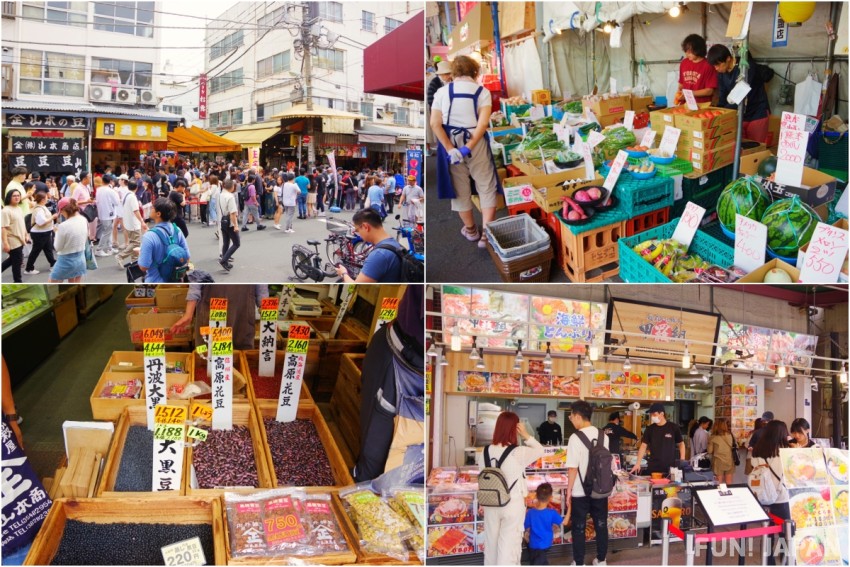
77.food, our Taiwanese Instagram influencer is thoroughly captivated by the array of Japanese foods displayed in the market. She eagerly picks up items that catch her eye, tasting samples and fully savoring the vibrant atmosphere of the Tsukiji Outer Market.
Moving from Tsukiji to Tokyo Tower. Off to the sushi-making experience!
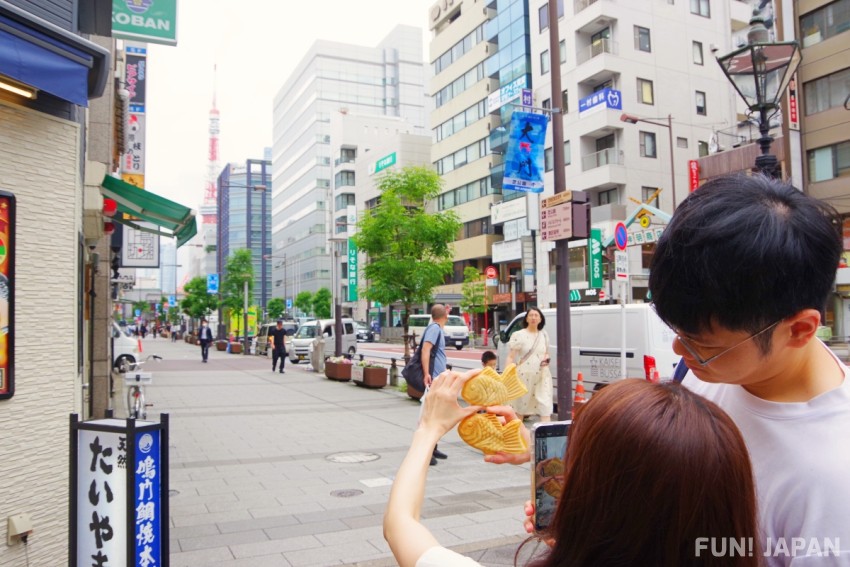
After fully enjoying a stroll around the Tsukiji Outer Market, we will take the Toei Oedo Line to Daimon Station, where there is a kitchen offering a sushi-making experience. . Along the way, we we'll pick up freshly made Taiyaki and enjoy a bite right there. The sweet red bean paste and crispy dough made 77.food smile.
After that, passing through Zojoji Temple located near the Tokyo Tower, we arrive at the destination of this tour.
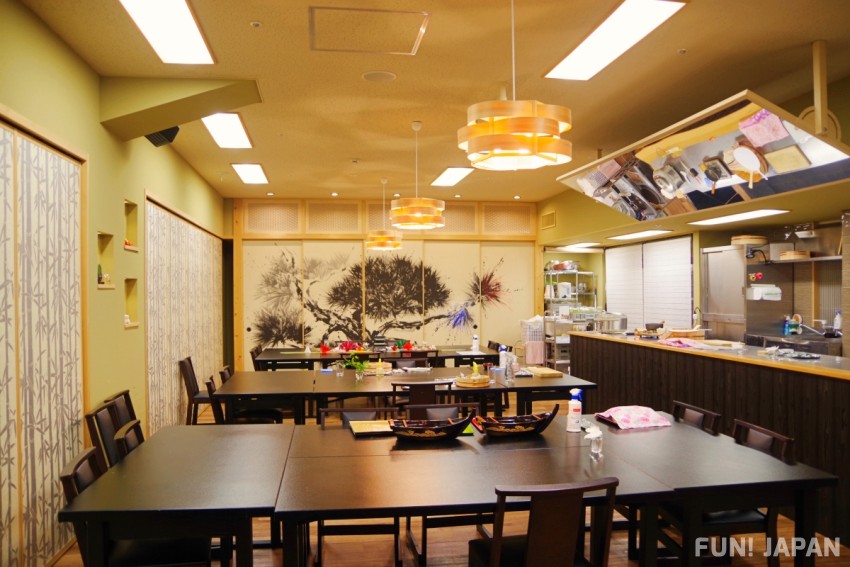
In this kitchen, where you can feel the Japanese atmosphere everywhere, we will experience making sushi.
Start of a Sushi-Making Experience Tour with Professional Guidance
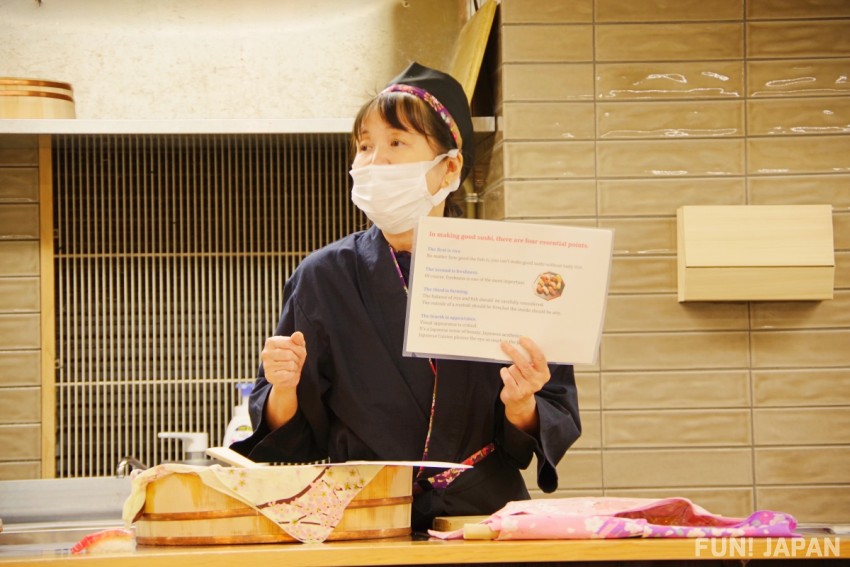
The instructor will guide you in English. It's nice for non-Japanese speaker to experience sushi-making comfortably .
"Japan is surrounded by the sea, which makes seafood abundant, and sushi has been eaten since ancient times. There are four key points to making sushi:the quality of the rice, freshness of the fish, balance between rice and fish, and aesthetic presentation. It is important to keep these four points in mind in order to make delicious sushi," (Instructor)
This time, 77.food will be taking on a course where they can try their hand at three types of sushi: nigiri, gunkan, and Sushi rolls.
Starting with the making of a key element of sushi 'vinegared rice',

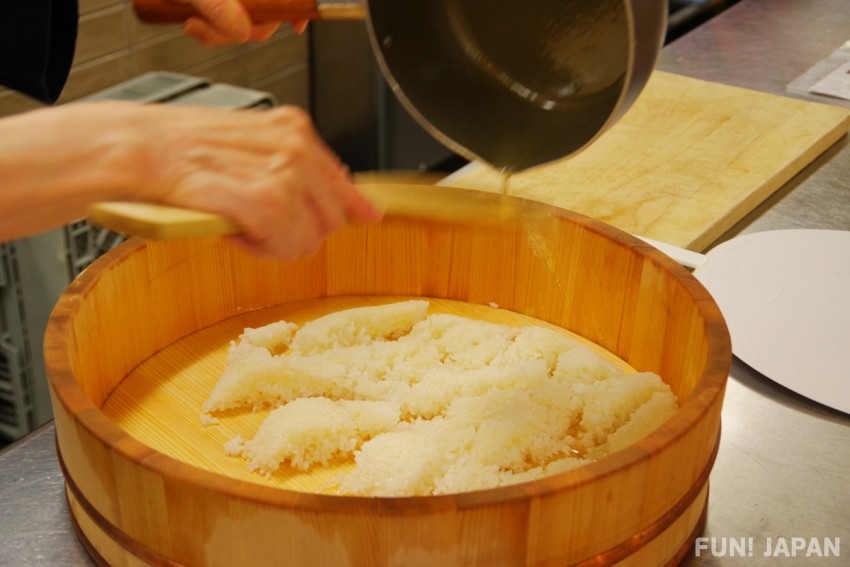
Guided by advice to quickly mix the vinegar into the rice with a cutting motion using a rice paddle, 77.food also takes hold of the paddle. Mixing the rice to achieve a fluffy texture proves unexpectedly challenging. Despite struggling a bit, she continues her work while being praised by the instructor.
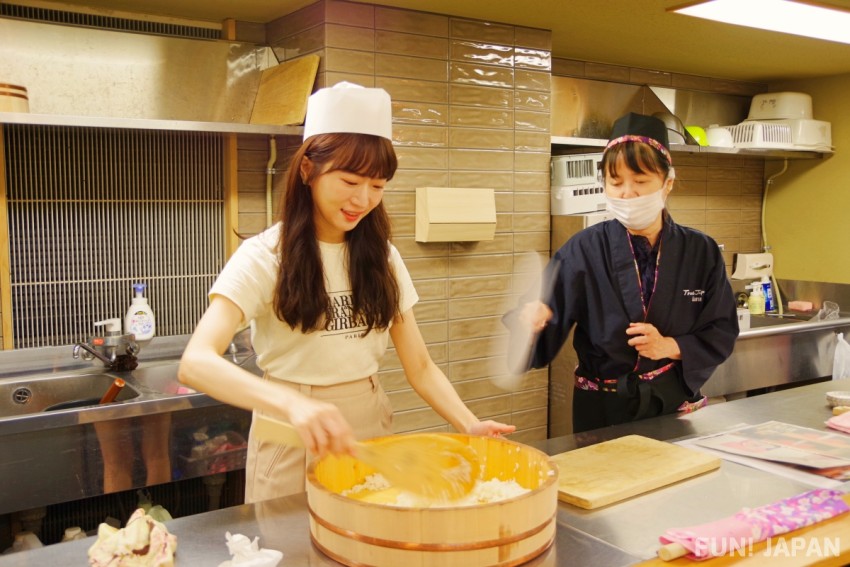
Along the way, when she asks, "Why is the rice for Edo-style sushi red?" she receives the answer, "It's because they use something called red vinegar." One of the charms of this tour is that you will get all those answers about sushi that you've always had.
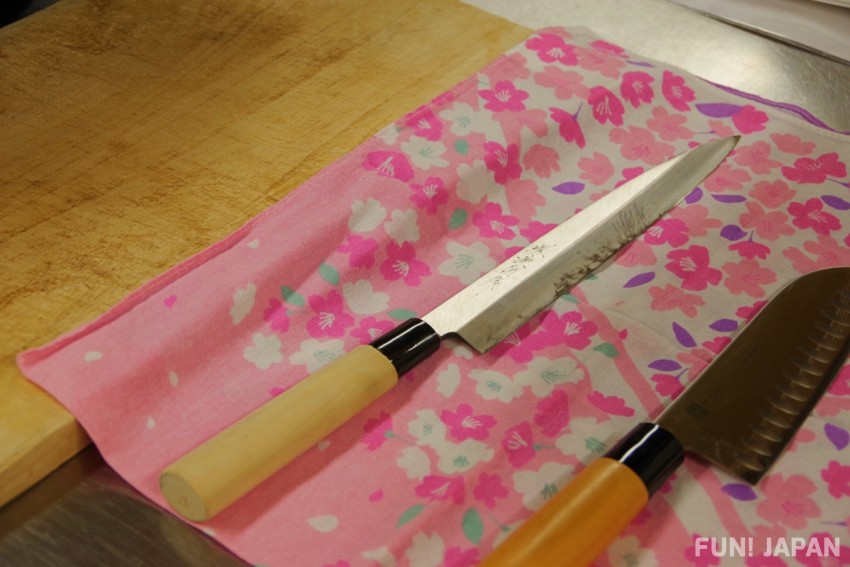
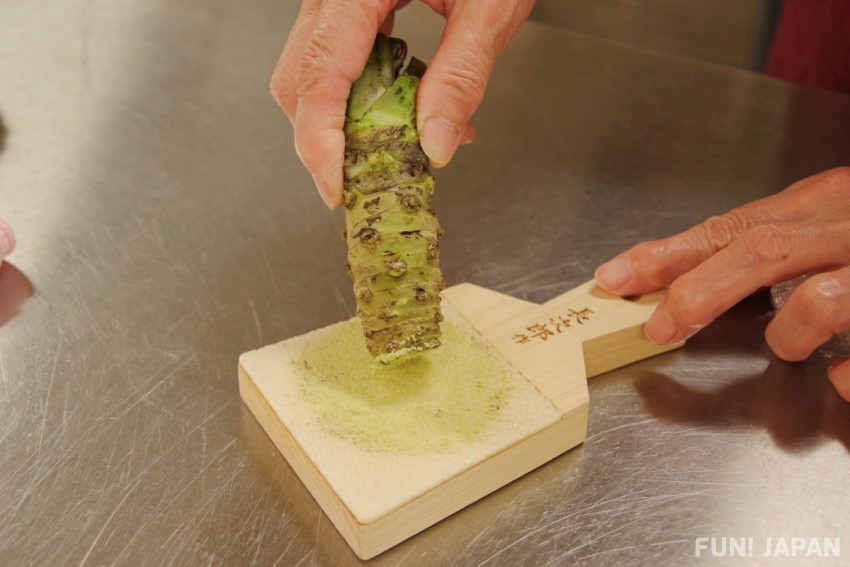
Once the sushi rice is ready, the next step is to learn how to handle a sashimi knife and how to grate real wasabi (※Real wasabi is included in the Super Deluxe Course). Both are unique aspects of Japanese culture, and it seems that 77.food can't hide their excitement. While listening to the instructor's explanation, they can't stop taking pictures.
Finally, it's time for the demonstration of sushi-making. What's the tip?
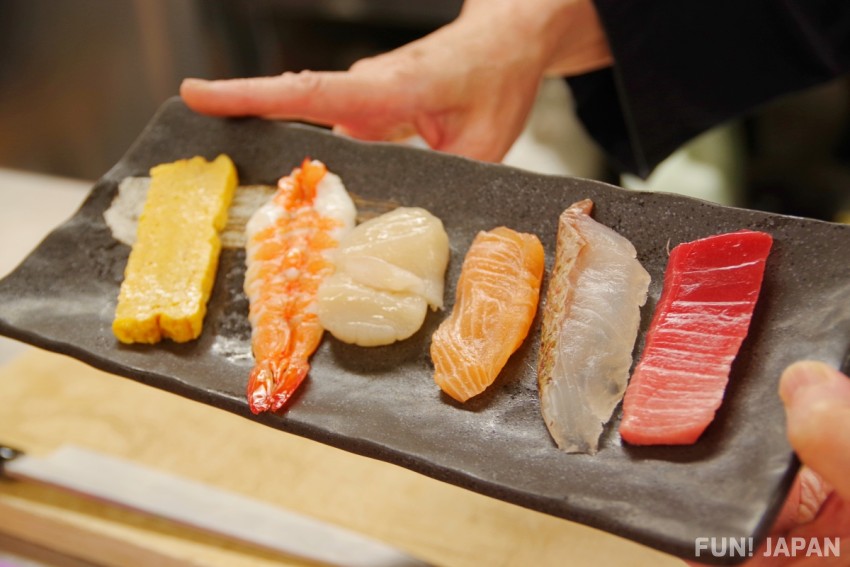
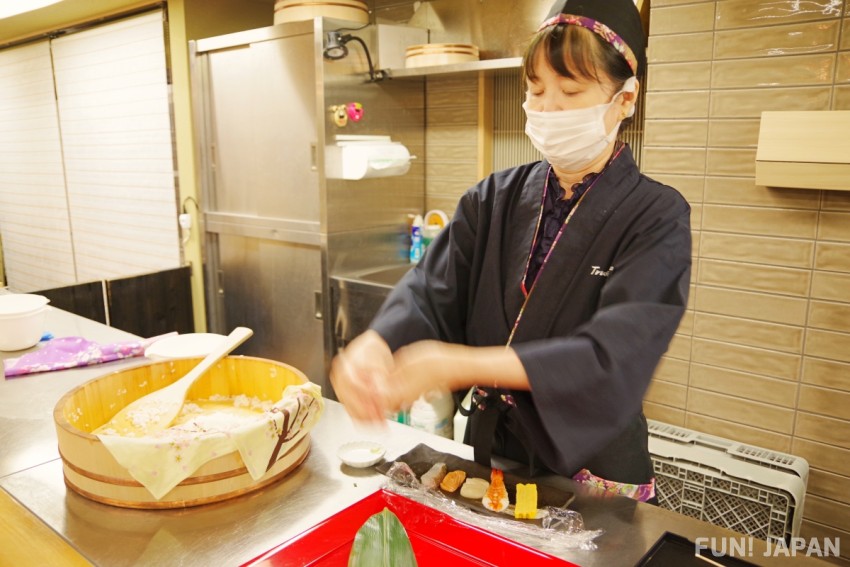
The selections this time are medium-fatty tuna, sea bream, salmon, scallops, shrimp, and tamagoyaki (Japanese rolled omelette). There's a knack to hand-forming sushi, though it's not something easily grasped. However, in this tour, the instructor demonstrates the technique right in front of you and provides advice as many times as needed, making it easier for anyone to pick up the knack!
At first, 77.food was a bit apprehensive, but gradually she seemed to get used to making sushi. The instructor remarked, "It's not often someone catches on so quickly. You're very talented."
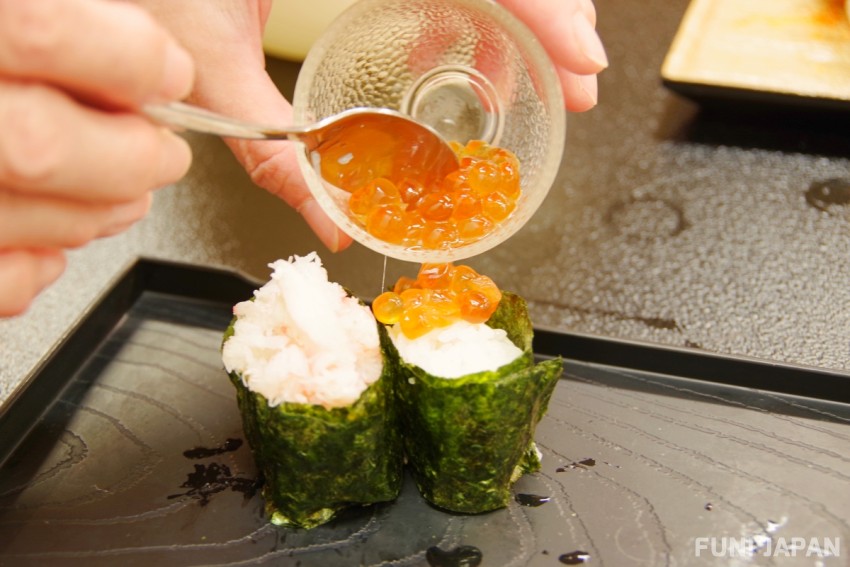
Once you've finished shaping all the prepared nigiri sushi, it's time to take on the gunkan sushi. Lightly shape the sushi rice, place it on a plate, and wrap it in seaweed. Once you've topped it with your choice of ingredients, it's ready to go. The ingredients prepared for the gunkan sushi this time are salmon roe and crab. "I love both salmon roe and crab, so I'm really happy," says 77.food, in high spirits.
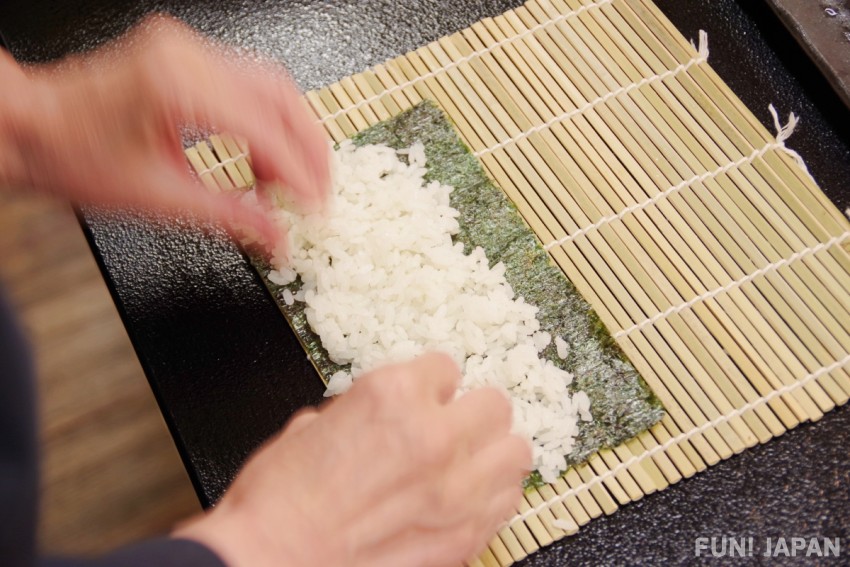
And finally, we make sushi rolls. The ingredient is refreshing cucumber.
We spread sushi rice on top of the seaweed, place the cucumber on it, and then use a bamboo mat to shape it into a thin roll. This is surprisingly difficult, but we roll them one by one with the help of the instructor.
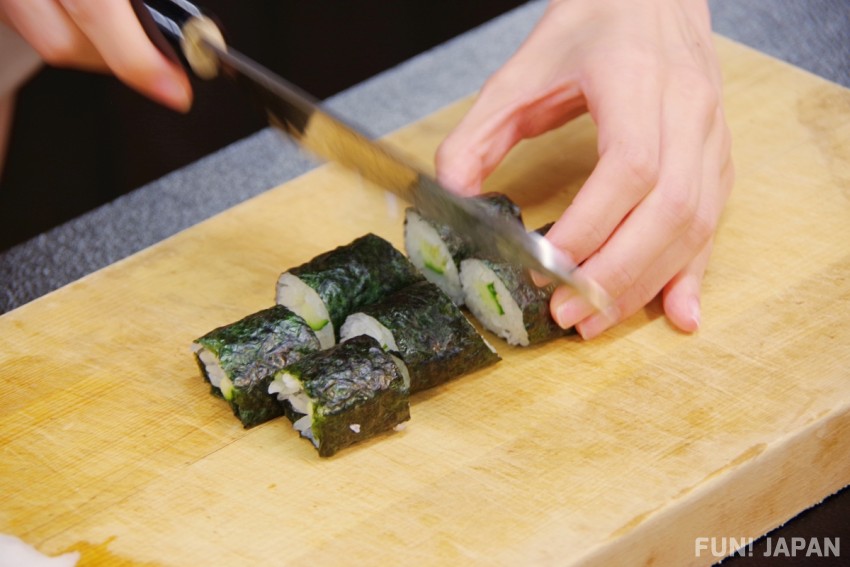
The finished sushi rolls are cut with a knife, but this requires a certain technique. To avoid crushing the vinegar rice, the instructor recommends using the elbow while pulling the knife, wiping the blade with a cloth after each cut to achieve a beautiful cross-section.
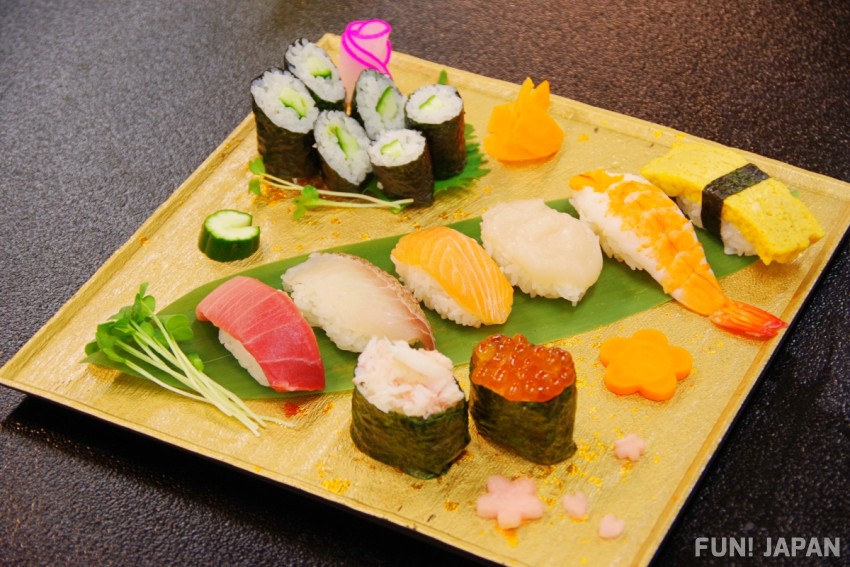
Once the nigiri, gunkan, and sushi rolls are all prepared, the final step is to arrange them on a plate together with garnished vegetables by the instructor. This is where creativity shines. After some deliberation, 77.food finishes her creation with a beaming smile saying "Hey Omachi!".
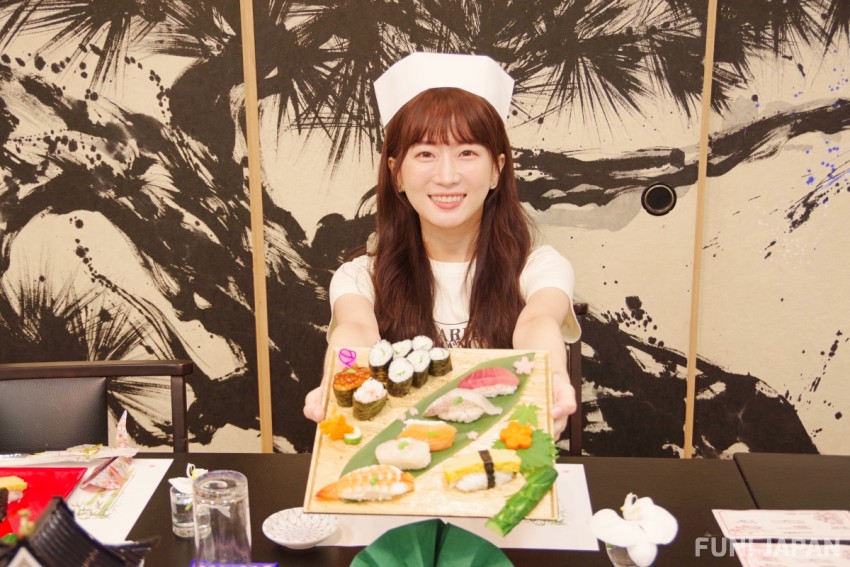
"I've always loved sushi, so I was looking forward to today's tour. Actually trying to make it was challenging but fun. It made me realize how skilled sushi chefs really are. The instructor effortlessly whipped it up, but I now understand how difficult it can be. I'd like to try making it at home next time." (77.food)
👉 Kyochi 77 | Travel Sharing, Taipei Food, Japanese Food | 77.food (Instagram)
Everyone tries their handiwork! How does the sushi you made yourself taste?
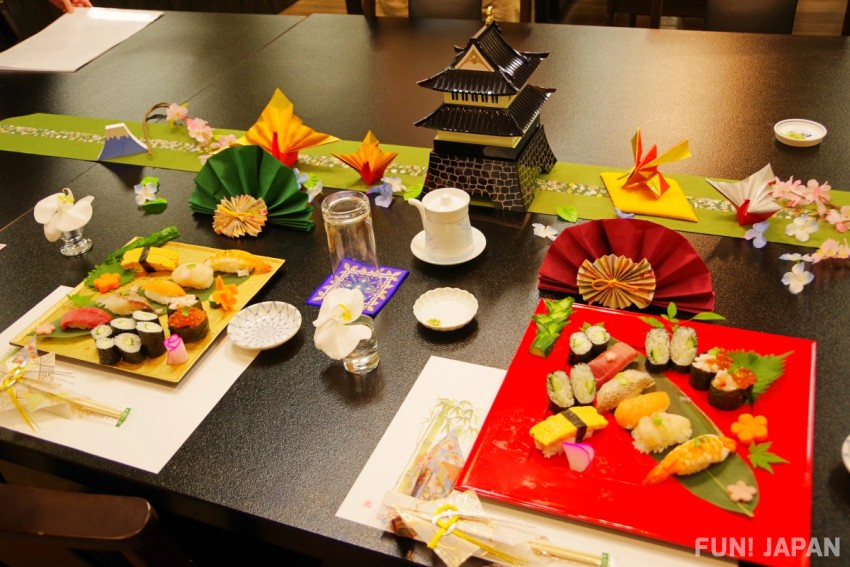
We taste them in the same space where we made. The taste of something crafted by their own hands should be exceptional even for those who are used to eating sushi. Moreover, all the ingredients used are of the same quality as those found in actual sushi restaurants, ensuring both deliciousness and freshness.
According to the instructor, there has been an explosive increase in bookings for sushi-making experiences since the easing of COVID-19 restrictions. A majority of participants are foreign tourists, some of whom come in groups, enjoying the experience together.
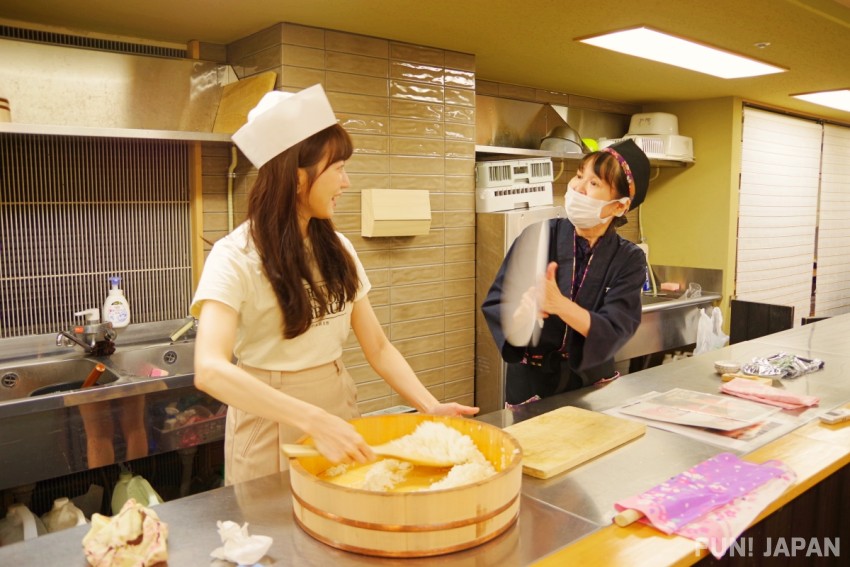
"Most of our customers are from the United States and Europe, but we've seen a growing number from Asian countries like Singapore and Taiwan recently. We primarily teach in English, aiming to be concise and clear," the instructor explains.
Additionally, they strive to be flexible and accommodate individual needs..
"For example, if someone finds it difficult to shape sushi by hand, we provide sushi-making kits that allow them to neatly mold vinegared rice into oblong shapes. These kits come with recipes in English. We respect each country's religious and cultural preferences, offering alternatives like vegetarian and gluten-free options. We also make adjustments such as substituting fish with vegetables or using rice vinegar. It's gratifying to hear 'I had a great time, thank you,' and to know that we've shared Japanese sushi culture effectively," says the instructor.
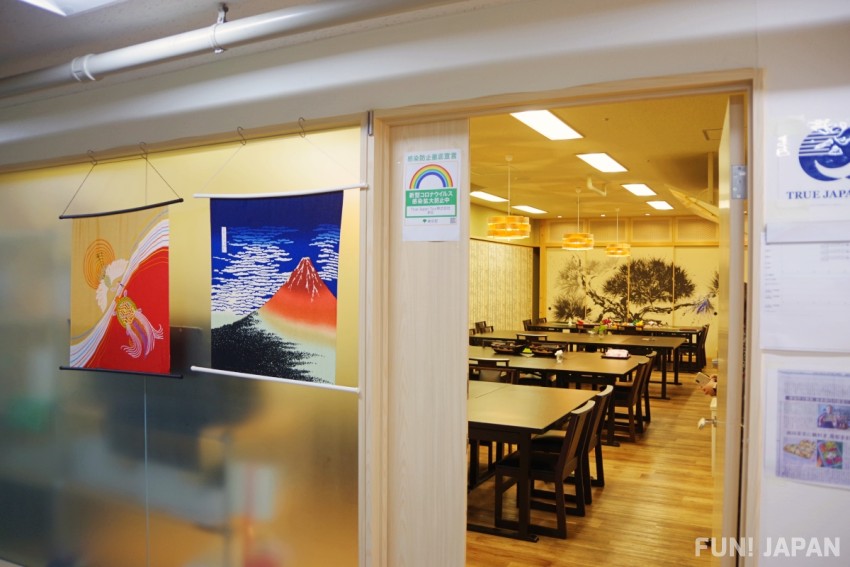
For those who love sushi and are interested in Japanese food culture, why not try the "Tsukiji Outer Market and Sushi Making Tour"? Experiencing Japanese food culture with your own hands and taste buds is sure to be a memory for a lifetime.
Details of Tsukiji Market and Sushi-Making Basic Course
- Duration: 3 hours
- Languages: Japanese, English
- Number of participants: 2 to 65 people (groups) possible
- Price: 24,200 yen per person (ages 13-80)
- Cancellation policy: 50% payment for cancellations from 2 days before, 100% payment for same-day cancellations
👉 Book the tour now (Japan Food Guide)
👉 Kyochori 77 | Travel Sharing, Taipei Cuisine, Japanese Cuisine (Instagram)
If you want to book a restaurant or food experience tour, Japan Food Guide is convenient!
A restaurant and food experience reservation service for inbound tourists. It supports the highly demanded "instant reservation", and you can smoothly complete everything from searching for a restaurant to making a reservation. It supports 4 languages: "English", "Korean", and "Chinese (Traditional and Simplified)".
👉 Find food experience tours and restaurants from Japan Food Guide (Official Site)
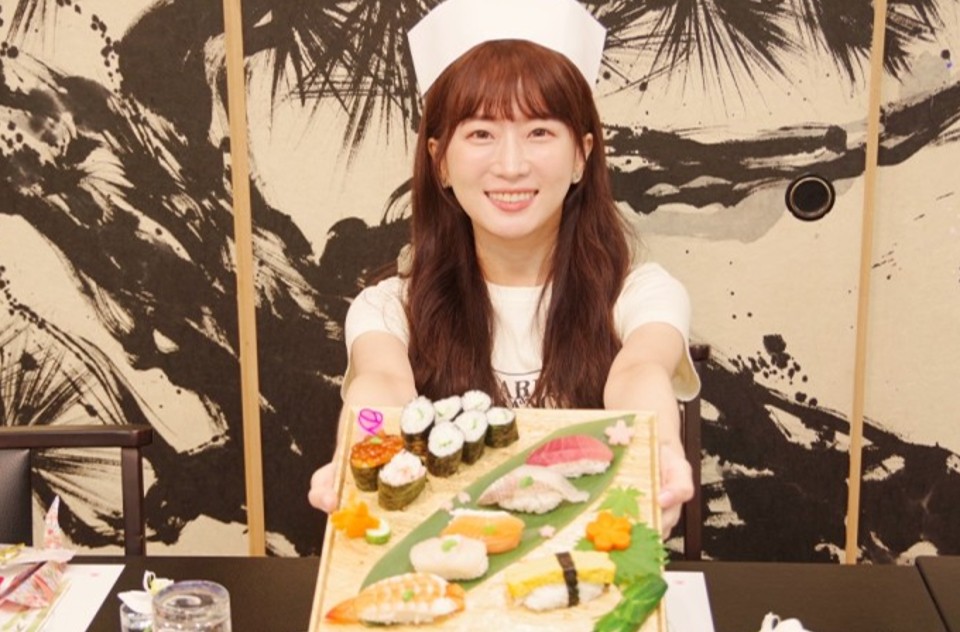
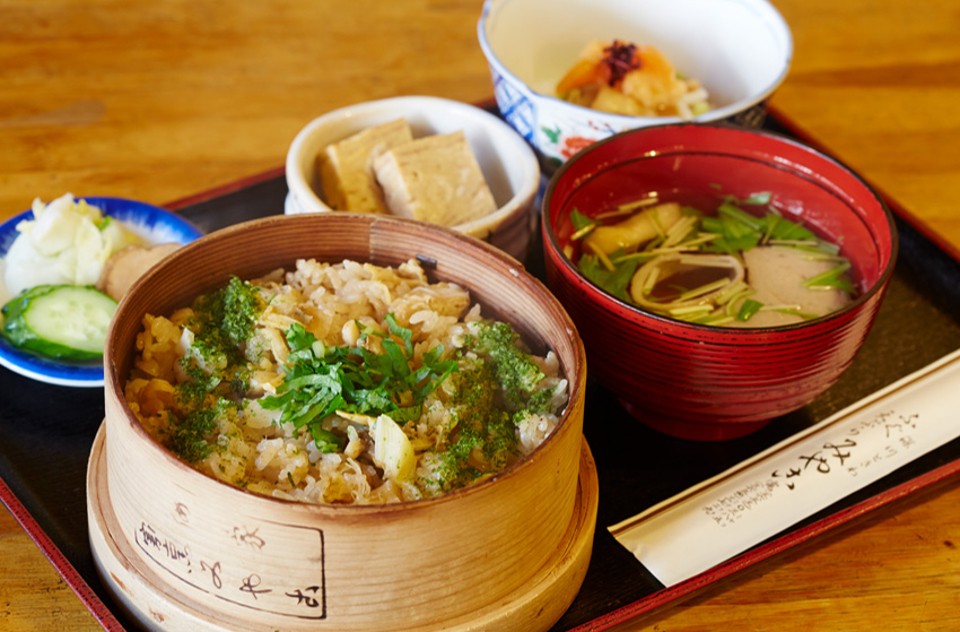
Comments